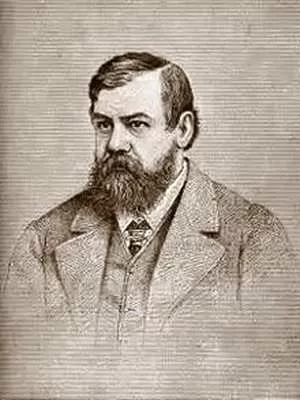Uncover the truth behind the legendary mermaids and their history of deception. From Frank Buckland’s examination of a mermaid specimen to Phineas T. Barnum’s Feegee Mermaid, learn about the people and industries that created these mythical creatures.
In August 1858, a curious correspondence unfolded between two notable figures of the time: Professor Richard Owen and Frank Buckland. Owen, a prominent scientist, reached out to Buckland with a peculiar request—to examine a specimen of a mermaid. Buckland, thrilled by the opportunity, made his way to the back parlour of the White Hart in Spitalfields, London. There, he encountered a bizarre creature displayed in a glass case, which turned out to be a merman rather than a mermaid.

The Merman Mystery
Upon closer inspection, Buckland discovered that the creature was approximately three to four feet long, featuring the head, arms, and trunk of a monkey sewn onto the body of a fish, specifically a common hake. Buckland, known for his keen observations, noted, “Such a thing as a merman or mermaid of course never really existed.” The head, with its parchment-like ears, snub nose, and ghastly grin, left a lasting impression on him. The teeth of the hake had been affixed to the monkey’s jaw, along with a human incisor, creating a grotesque yet fascinating visage.
The craftsmanship was impressive; the creature was neatly sewn together, likely designed to be displayed upright. Buckland learned that the merman had been created by a local taxidermist and was one of a pair. Intrigued, he set off to find the merman’s counterpart.
The Search for the Mermaid
Buckland’s quest led him to a curiosity shop near Hungerford Market, where he discovered the mermaid—half the size of the merman and far less skillfully crafted. This mermaid had doll-like glass eyes, no teeth, and a bullet-shaped head. The shop owner speculated that she had originated from America and had once been exhibited at the Egyptian Hall. Rumors swirled around her purchase, claiming that two Italian brothers had acquired her for a staggering $40,000, only to become embroiled in a legal battle over her public display.
In 1866, Buckland learned of another mermaid belonging to Captain Cuming R.N., who had brought it back from Yokohama. This mermaid was part of a thriving cottage industry in Japan, where artisans crafted mermaids for the tourist trade. These creations were often linked to the Buddhist cult of Ningyo Shinko, which revered mummified mermaids. Buckland described this particular mermaid as having the head of a small monkey, prominent teeth, and a fish’s skin seamlessly joined to the monkey’s body.
The Legendary Feegee Mermaid
Buckland also delved into the story of Phineas T. Barnum’s Feegee Mermaid, perhaps the most famous of all mermaid hoaxes. In 1842, Moses Kimball brought the mermaid to Barnum, who entered into a leasing agreement. Barnum, ever the showman, printed ten thousand advertising leaflets and commissioned a painting depicting three beautiful mermaids frolicking in the waves. His marketing efforts paid off handsomely, earning him an impressive $868 in just the first four weeks of the display.
Buckland mused about Barnum’s other acquisition, a specimen he referred to as the “Nondescript.” This peculiar creation, about the size of a three-month-old baby, was made from various animal parts, wood, and papier-mâché. Promoted as a sea-devil caught in a fisherman’s nets, it featured demonic hands and feet, scrawny limbs, and a head resembling an apple, complete with codfish-like eyes and fierce fangs. Buckland humorously lamented that visitors to his collection often became more fascinated with the Nondescript than with his other, more valuable exhibits.
The Enduring Allure of Mermaids
The fascination with mermaids and mermen persists to this day, captivating imaginations and inspiring countless tales. From ancient mythology to modern pop culture, these mythical beings symbolize mystery, beauty, and the unknown depths of the ocean. The stories of Buckland, Barnum, and the various mermaid hoaxes serve as a reminder of humanity’s enduring desire to explore the fantastical and the bizarre.
In conclusion, the history of mermaid hoaxes is a testament to the creativity and ingenuity of those who crafted these remarkable specimens. While the truth behind these creatures may be rooted in deception, their allure continues to enchant and intrigue. As we delve into the depths of history, we uncover not just the stories of these mythical beings but also the cultural significance they hold in our collective imagination.